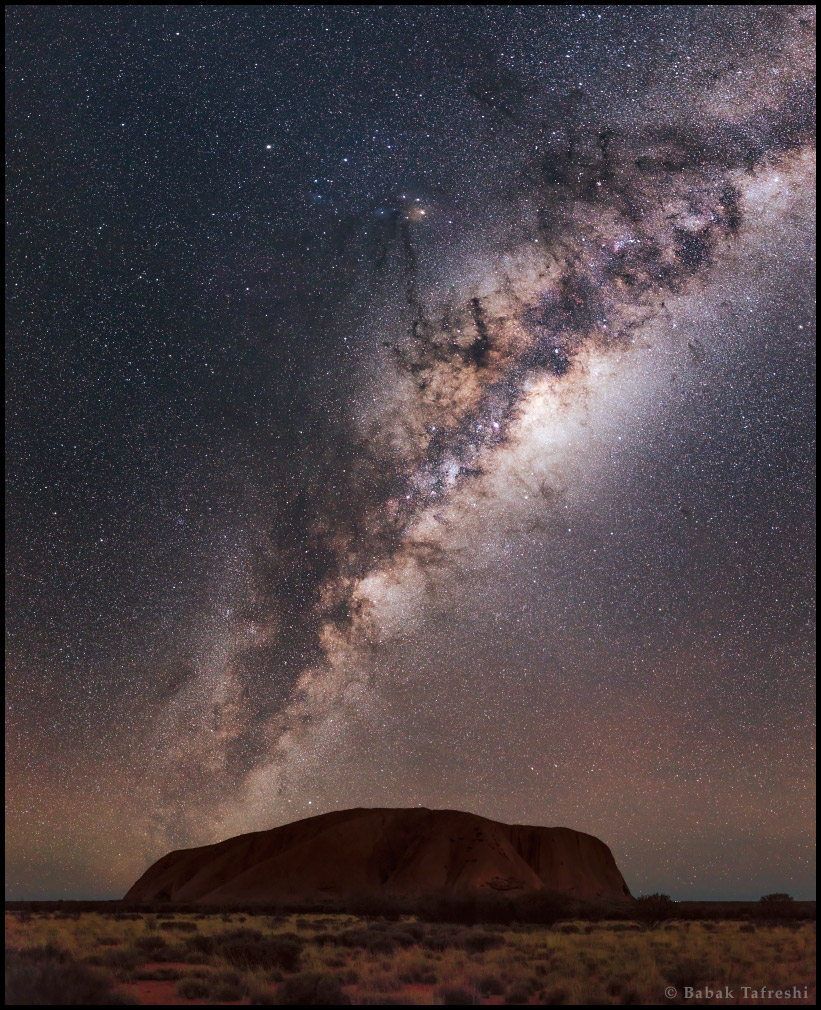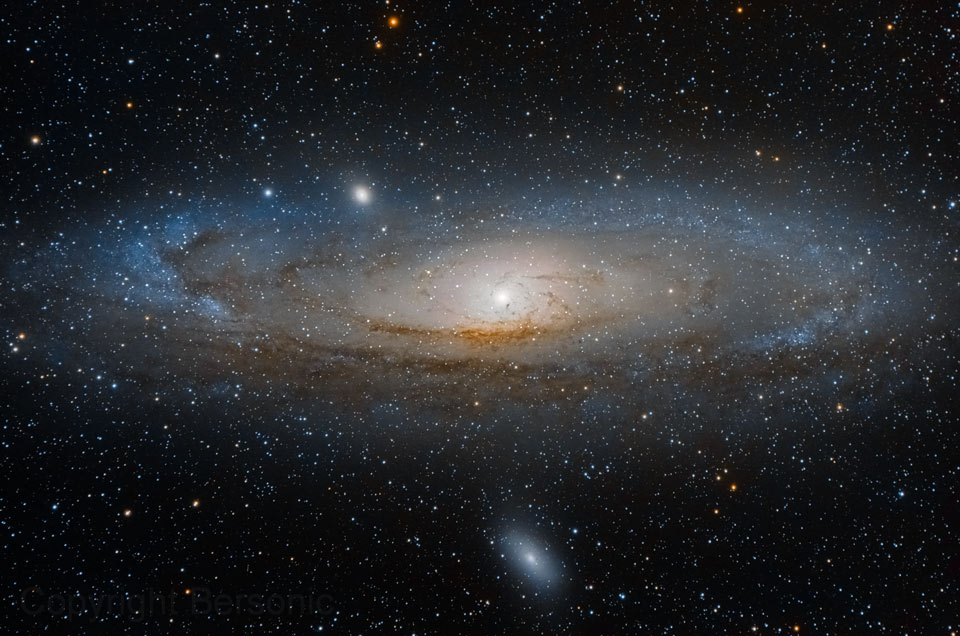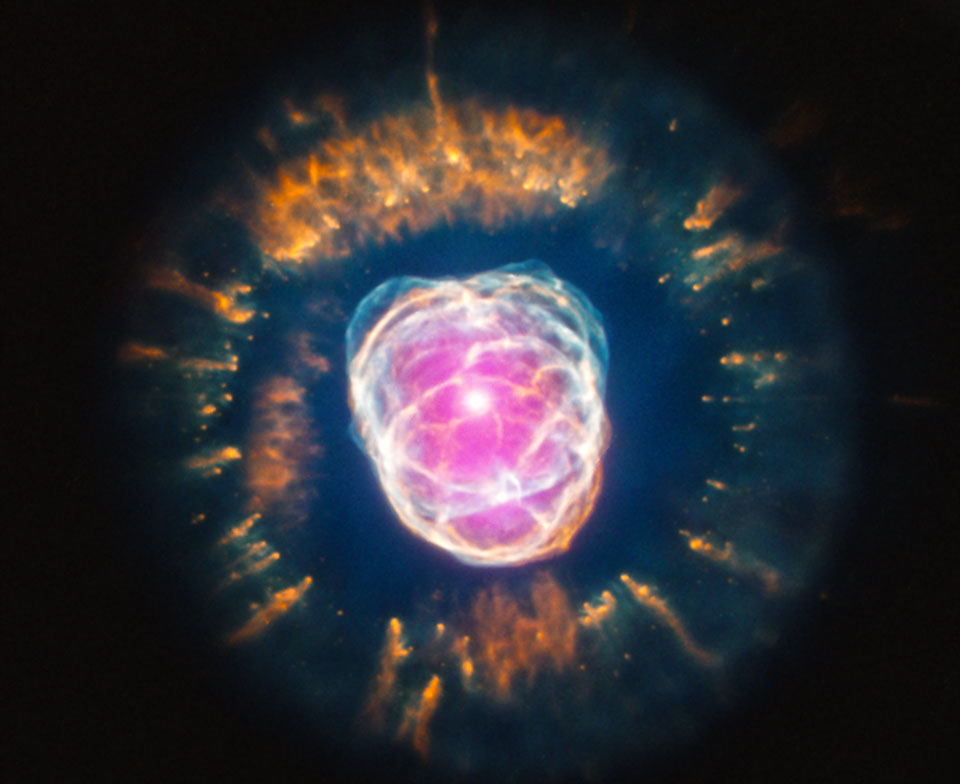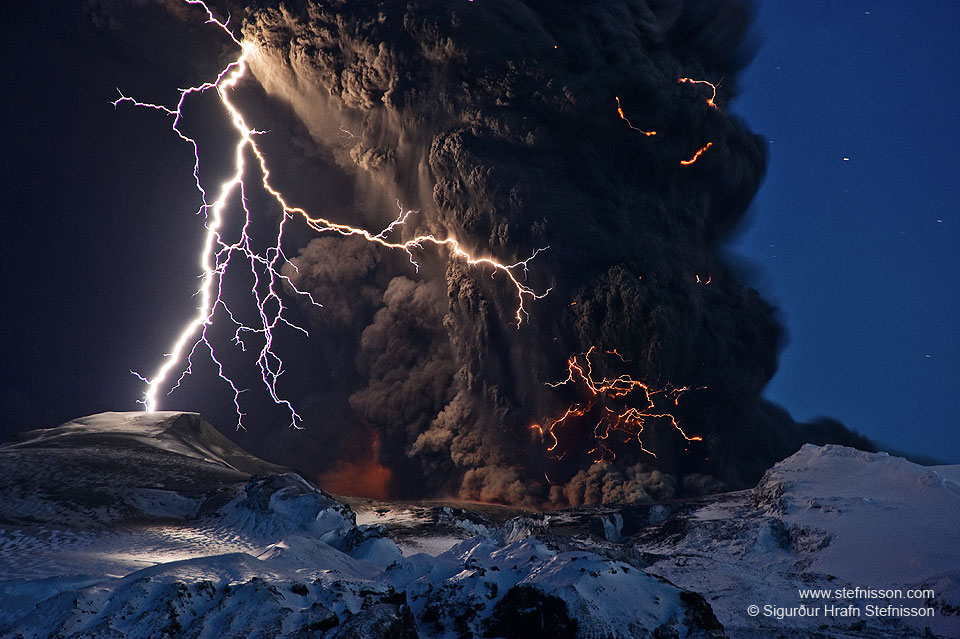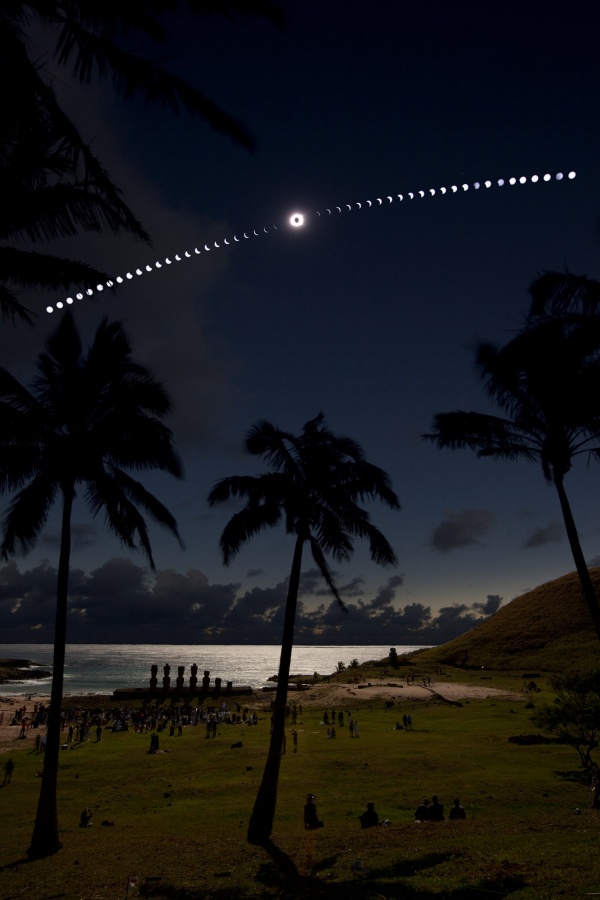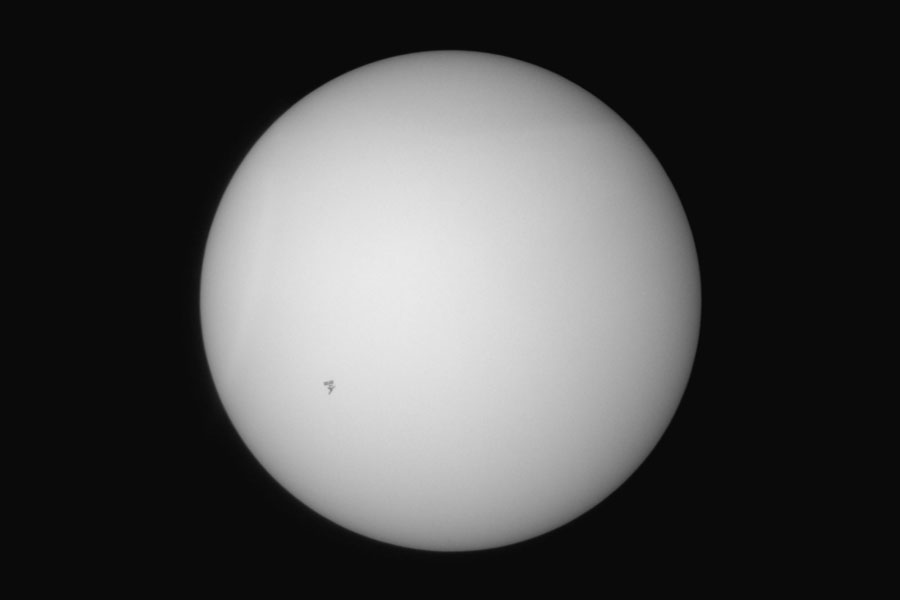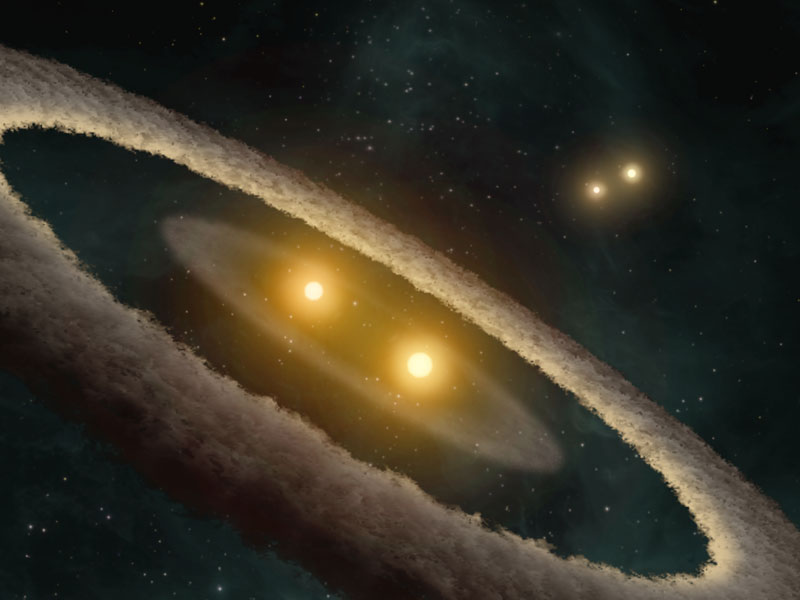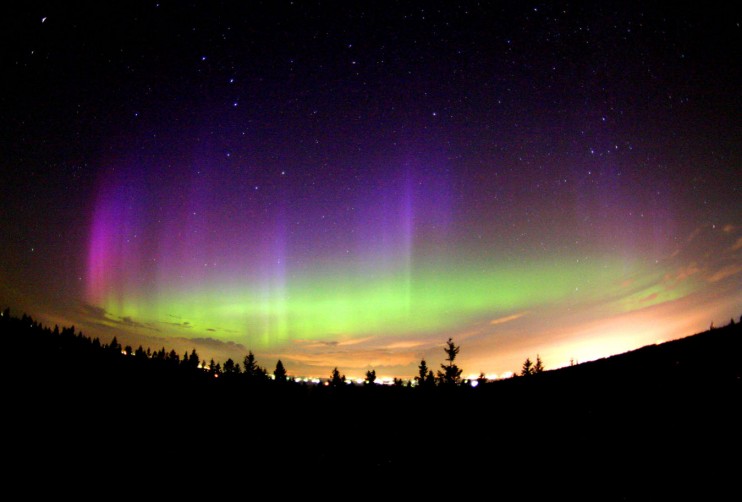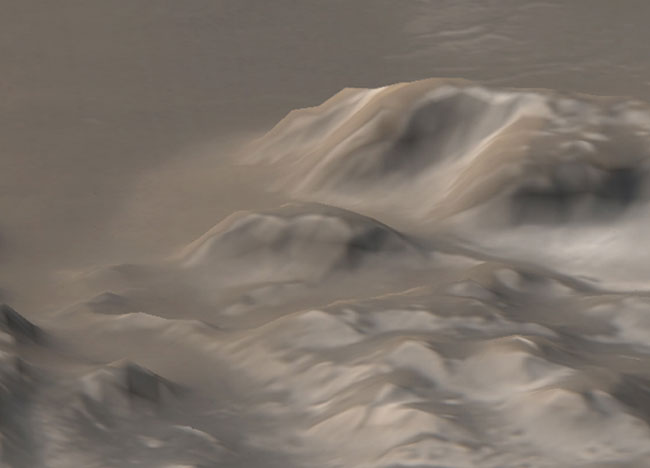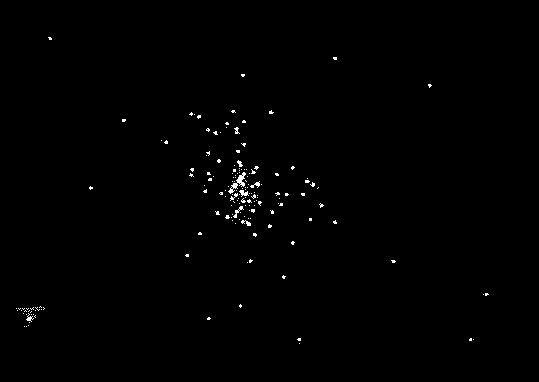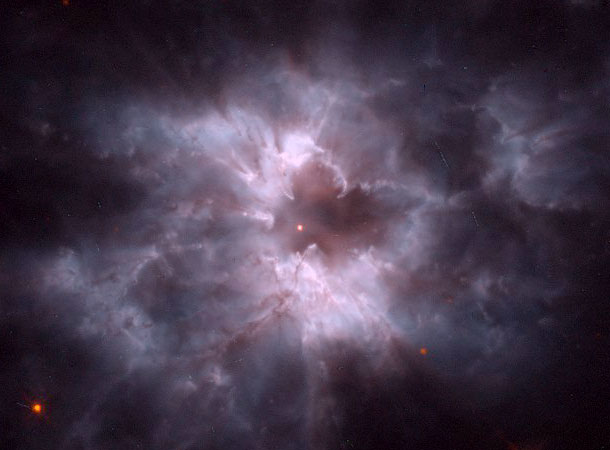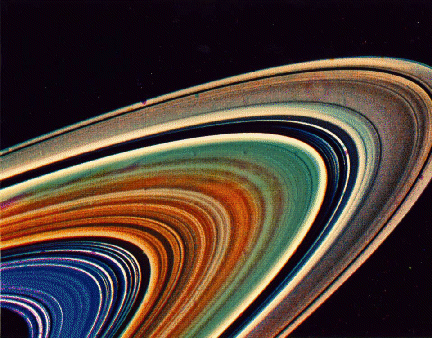| << Previous | Index | Next >> |
2015 The central regions of our Milky Way Galaxy rise above Uluru/Ayers Rock in this striking night skyscape. Recorded on July 13, a faint airglow along the horizon shows off central Australia's most recognizable landform in silhouette. Of course the Milky Way's own cosmic dust clouds appear in silhouette too, dark rifts along the galaxy's faint congeries of stars. Above the central bulge, rivers of cosmic dust converge on a bright yellowish supergiant star Antares. Left of Antares, wandering Saturn shines in the night.
2014 Andromeda is the nearest major galaxy to our own Milky Way Galaxy. Our Galaxy is thought to look much like Andromeda. Together these two galaxies dominate the Local Group of galaxies. The diffuse light from Andromeda is caused by the hundreds of billions of stars that compose it. The several distinct stars that surround Andromeda's image are actually stars in our Galaxy that are well in front of the background object. Andromeda is frequently referred to as M31 since it is the 31st object on Messier's list of diffuse sky objects. M31 is so distant it takes about two million years for light to reach us from there. Although visible without aid, the above image of M31 was taken with a standard camera through a small telescope. Much about M31 remains unknown, including how it acquired its unusual double-peaked center.
2013 In 1787, astronomer William Herschel discovered the Eskimo Nebula. From the ground, NGC 2392 resembles a person's head surrounded by a parka hood. In 2000, the Hubble Space Telescope imaged the Eskimo Nebula in visible light, while the nebula was imaged in X-rays by the Chandra X-ray Observatory in 2007. The above combined visible-X ray image, with X-rays emitted by central hot gas and shown in pink, was released last week. From space, the nebula displays gas clouds so complex they are not fully understood. The Eskimo Nebula is clearly a planetary nebula, and the gas seen above composed the outer layers of a Sun-like star only 10,000 years ago. The inner filaments visible above are being ejected by strong wind of particles from the central star. The outer disk contains unusual light-year long orange filaments. The Eskimo Nebula spans about 1/3 of a light year and lies in our Milky Way Galaxy, about 3,000 light years distant, toward the constellation of the Twins (Gemini).
2012 Why did the picturesque 2010 volcanic eruption in Iceland create so much ash? Although the large ash plume was not unparalleled in its abundance, its location was particularly noticeable because it drifted across such well-populated areas. The Eyjafjallajökull volcano in southern Iceland began erupting on 2010 March 20, with a second eruption starting under the center of a small glacier on 2010 April 14. Neither eruption was unusually powerful. The second eruption, however, melted a large amount of glacial ice which then cooled and fragmented lava into gritty glass particles that were carried up with the rising volcanic plume. Pictured above during the second eruption, lightning bolts illuminate ash pouring out of the Eyjafjallajökull volcano.
2011 A quest to find planet Earth's darkest night skies led to this intriguing panorama. In projection, the mosaic view sandwiches the horizons visible in all-sky images taken from the northern hemisphere's Canary Island of La Palma (top) and the south's high Atacama Desert between the two hemispheres of the Milky Way Galaxy. The photographers' choice of locations offered locally dark skies enjoyed by La Palma's Roque de los Muchachos Observatory and Paranal Observatory in Chile. But it also allowed the directions to the Milky Way's north and south galactic poles to be placed near the local zenith. That constrained the faint, diffuse glow of the plane of the Milky Way to the mountainous horizons. As a result, an even fainter S-shaped band of light, sunlight scattered by dust along the solar system's ecliptic plane, can be completely traced through both northern and southern hemisphere night skies.
2010 As the New Moon's shadow slid across the southern Pacific on July 11, people gathered along the white, sandy Anakena Beach on the north side of Easter Island to watch a total solar eclipse. The experience was captured in this tantalizing composite image, constructed from a sequence of 50 consecutive exposures. At their center is the totally eclipsed Sun surrounded by a shimmering solar corona. From the well chosen viewpoint, palm trees appear in silhouette against a darkened sky and the faint light reflected in the water. Of course, towering above the onlookers, at the boundaries of land, ocean, and sky are Moai, the island's mysterious monolithic statues.
2009 The July 22nd total solar eclipse was the longest of the 21st century. From the point of maximum eclipse along the Moon's shadow track across the Pacific Ocean, the Moon completely blocked the Sun for a total of 6 minutes and 39 seconds. But from the deck of this cruise ship the duration of the total eclipse phase was extended to a whopping 6 minutes and 42 seconds by the ship's motion along the shadow track. This panoramic view of the scene shows the shimmering solar corona in a darkened daytime sky, with clouds silhouetted by a bright sky on the distant horizon, beyond the Moon's shadow. Mercury can be seen near the eclipsed Sun. Venus lies near the upper right edge of the frame.
2008 That's no sunspot. It's the International Space Station (ISS) caught by chance passing in front of the Sun. Sunspots, individually, have a dark central umbra, a lighter surrounding penumbra, and no solar panels. By contrast, the ISS is a complex and multi-spired mechanism, one of the largest and most sophisticated machines ever created by humanity. Also, sunspots occur on the Sun, whereas the ISS orbits the Earth. Transiting the Sun is not very unusual for the ISS, which orbits the Earth about every 90 minutes, but getting one's timing and equipment just right for a great image is rare. Strangely, besides that fake spot, the Sun, last week, lacked any real sunspots. Sunspots have been rare on the Sun since the dawn of the current Solar Minimum, a period of low solar activity. Although fewer sunspots have been recorded during this Solar Minimum than for many previous decades, the low solar activity is not, as yet, very unusual.
2007 How would it look to have four suns in the sky? Planets of the HD 98800 system, if they exist, would experience such a view. HD 98800 is a multiple star system about 150 light years from Earth -- right in our section of the Milky Way Galaxy. For years it has been known that HD 98800 consists of two pairs of double stars, with one pair surrounded by a disk of dust. The star pairs are located about 50 AU from each other -- in comparison just outside the orbit of Pluto. Recent data from the Earth-trailing Spitzer Space Telescope in infrared light, however, indicate that the dust disk has gaps that appear consistent with being cleared by planets orbiting in the disk. If so, one planet appears to be orbiting at a distance similar to Mars of our own Solar System. Pictured above is an artist's drawing of how the HD 98800 system might appear to a nearby observer.
2006 The largest canyon in the Solar System cuts a wide swath across the face of Mars. Named Valles Marineris, the grand valley extends over 3,000 kilometers long, spans as much as 600 kilometers across, and delves as much as 8 kilometers deep. By comparison, the Earth's Grand Canyon in Arizona, USA is 800 kilometers long, 30 kilometers across, and 1.8 kilometers deep. The origin of the Valles Marineris remains unknown, although a leading hypothesis holds that it started as a crack billions of years ago as the planet cooled. Recently, several geologic processes have been identified in the canyon. The above mosaic was created from over 100 images of Mars taken by Viking Orbiters in the 1970s.
2005 Close to the Great Bear (Ursa Major) and surrounded by the stars of the Hunting Dogs (Canes Venatici), this celestial nebula was discovered in 1781 by the metric French astronomer Pierre Mechain. Later, it was added to the catalog of his friend and colleague Charles Messier as M106. Modern deep telescopic views reveal it to be an island universe -- a spiral galaxy around 30 thousand light-years across located only about 21 million light-years beyond the stars of the Milky Way. Youthful blue star clusters and reddish stellar nurseries trace the striking spiral arms of M106. Seen so clearly in this beautiful image, the galaxy's bright core is also visible across the spectrum from radio to x-rays, making M106 a nearby example of the Seyfert class of active galaxies. The bright core of a Seyfert galaxy is believed to be powered by matter falling into a massive central black hole.
2004 While enjoying the spaceweather on a gorgeous summer evening in mid-July, astronomer Philippe Moussette captured this colorful fish-eye lens view looking north from the Observatoire Mont Cosmos, Quebec, Canada, planet Earth. In the foreground, lights along the northern horizon give an orange cast to the low clouds. But far above the clouds, at altitudes of 100 kilometers or more, are alluring green and purple hues of the aurora borealis or northern lights, a glow powered by energetic particles at the edge of space. In the background are familiar stars of the northern sky. In particular, that famous celestial kitchen utensil, the Big Dipper (left), and the W-shaped constellation Cassiopeia (right) are easy to spot. Then, just follow the pointer stars of the Big Dipper to Polaris, perhaps the most famous northern light of all.
2003 What causes the unusual white color on some Martian mountains? The answer can be guessed by noticing that the bright areas disappear as springtime takes hold in the south of Mars: dry ice. Dry carbon dioxide ice sublimates directly to gas from its frozen state. The frosty mountains, named Charitum Montes, have been covered with carbon dioxide ice over the Martian winter. The serene scene pictured above is not a photograph, but rather a computationally constructed digital illusion resulting from the fusion of two color images from the Mars Orbital Camera and topographic data from the Mars Orbiter Laser Altimeter. Both instruments operate from the Mars Global Surveyor robot spacecraft currently orbiting Mars. The red planet continues to grow larger in terrestrial skies as Earth and Mars move closer to their recent-record closest approach on August 27.
2002 Star clusters are a swarm of complex motions. The stars that compose globular clusters and many open clusters all orbit the cluster center, occasionally interacting, gravitationally, with a close-passing star. The orbits of stars around the cluster are typically not as circular as the orbits of planets in our solar system. Cluster stars frequently fall more directly toward the center and many times trace out unusual and complex loops. The vast space inside a cluster results in stars colliding only rarely. The above computer animation, derived from a type of computer code called an N-body simulation, shows 100 identical stars in a time-lapse movie where hundreds of years pass in one second.
2001 In the center of star-forming region 30 Doradus lies a huge cluster of the largest, hottest, most massive stars known. Known as R136, the cluster's energetic stars are breaking out of the cocoon of gas and dust from which they formed. This disintegrating cocoon, which fills the rest of the recently released above picture by the Hubble Space Telescope, is predominantly ionized hydrogen from 30 Doradus. R136 is composed of thousands of hot blue stars, some about 50 times more massive than our Sun. R136, also known as NGC 2070, lies in the LMC - a satellite galaxy to our own Milky Way Galaxy. Although the young ages of stars in R136 make it similar to a Milky Way open cluster, its high density of stars will likely turn it into a low mass globular cluster in a few billion years.
2000 Like a butterfly, a white dwarf star begins its life by casting off a cocoon that enclosed its former self. In this analogy, however, the Sun would be a caterpillar and the ejected shell of gas would become the prettiest of all! The above cocoon, the planetary nebula designated NGC 2440, contains one of the hottest white dwarf stars known. The white dwarf can be seen as the bright dot near the photo's center. Our Sun will eventually become a "white dwarf butterfly", but not for another 5 billion years. The above false color image and was post-processed by Forrest Hamilton.
1999 On February 20th, 1965, the Ranger 8 spacecraft crashed into the Moon. Rapidly transmitting a series of pictures to ground controllers, its camera recorded this one at an altitude of about 11 kilometers, 5 seconds before impacting the lunar surface. Two kilometers across, with 4 meter sized objects visible, the picture is of an area in the Sea of Tranquillity north of the Apollo 11 landing site. The Ranger spacecraft represented the first attempts by the US to obtain high resolution photos of the Moon, flying a crash course toward selected areas and sending back pictures until the moment of impact. Tomorrow, another spacecraft will be intentionally crashed into the Moon. Its very successful mission in lunar orbit complete, the Lunar Prospector is scheduled to crash into a crater near the Moon's south pole in an effort to confirm the presence of water-ice by studying the impact's debris cloud.
1998 This "synthetic color" image swath of the Elysium Volcanic Region of Mars was recorded by Mars Global Surveyor's wide angle camera on July 2. North is up and the sun illuminates the scene from the lower right. Bright clouds hover near the northern most dome-shaped volcano Hecates Tholus. The shield volcano Elysium Mons lies about 250 miles south near the image center, and farther south lies another dome-shaped volcano, Albor Tholus, with a broad summit basin or caldera. Even though Mars is just half the size of planet Earth, it is known for its volcanos - the largest of which dwarf their terrestrial counterparts.
1997 What lights up this castle of star formation? The familiar Eagle Nebula glows much like a neon sign, but in many colors at once. The above photograph is a composite of three of these glowing gas colors. In particular the glowing red Sulfur gas of the nebula nicely outlines some of the denser star forming knots. Energetic light from young massive stars causes the gas to glow and effectively boils away part of the dust and gas from its birth pillar. Many of these stars will explode after several million years, returning most of their elements back to the nebula which formed them. This process is forming an open cluster of stars known as M16.
1996 How often does a Full Moon occur twice in a single month? Exactly once in a Blue Moon. In fact, the modern usage of the term "Blue Moon" refers to the second Full Moon in a single month. Tonight's Blue Moon (Universal Time) will be the first since September 1993. A Blue Moon typically occurs every few years. The reason for the rarity of the Blue Moon is that the 29.53 days between full moons is just slightly shorter than the number of days in the average month. Don't, however, expect the moon to look blue tonight! The term "Blue Moon" is thought to derive from common language expressions used hundreds of years ago. It is possible for the Moon to appear tinged by a blue hue, sometimes caused by fine dirt circulating in the Earth's atmosphere, possibly from a volcanic explosion. The above picture is of our Moon taken was taken in a dark blue morning sky. The bright crescent is the only part directly exposed to sunlight - the rest of the Moon glows from sunlight reflected from the Earth. In this dramatic photo, however, the planet Jupiter is also visible along with its four largest moons.
1995 Saturn's spectacular system of bright rings has been the subject of study and wonder since Galileo first turned his telescope on the ringed planet in 1610. To Galileo, the blurry image produced by his small telescope was confusing. Saturn appeared to him to have "ear-like" appendages which he thought might be large moons. Eventually, larger telescopes revealed the incredible truth - Saturn was surrounded by bright rings. The image above, made by NASA's Voyager 2 spacecraft, further reveals the intricate structure of the ring system. The image has been computer enhanced and color coded to bring out the subtle details.
| << Previous | Index | Next >> |
